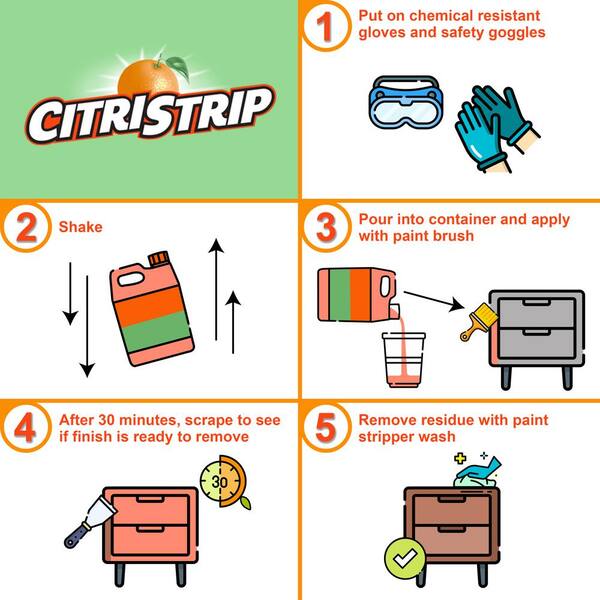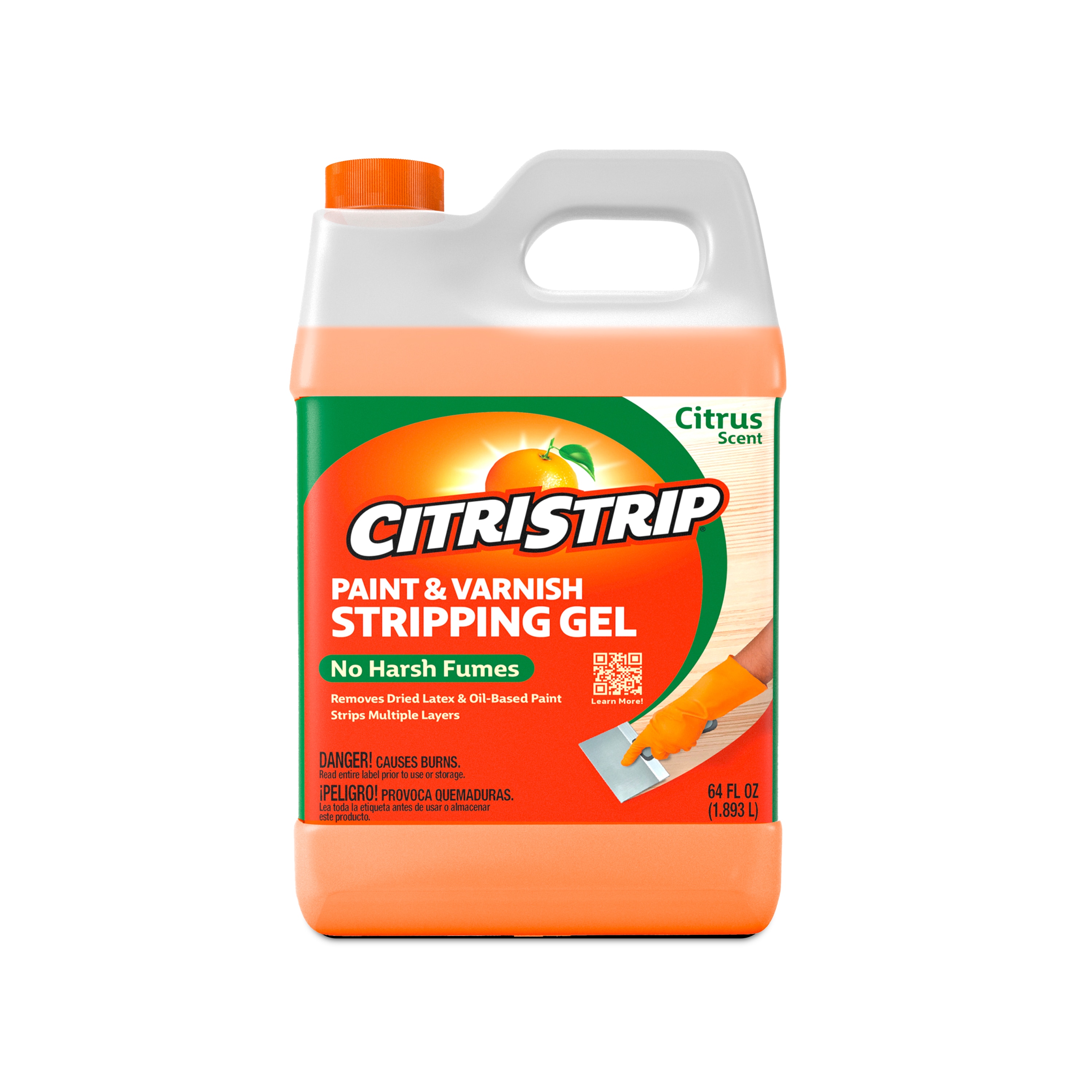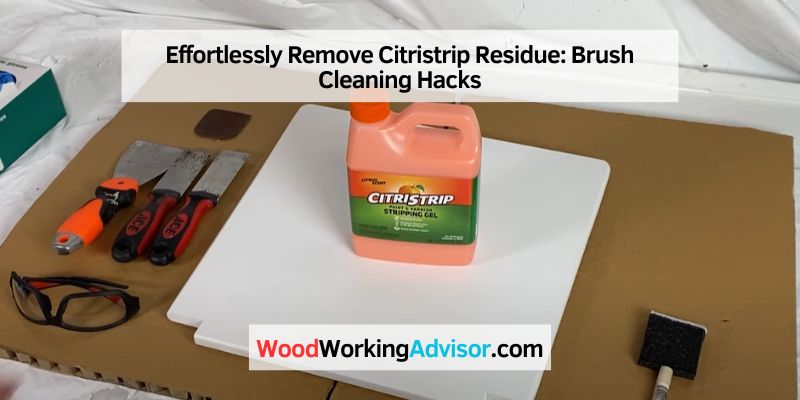To clean Citristrip from brushes, rinse them with warm water and mild soap. Brushes can easily become coated with Citristrip, a powerful paint stripping agent.
However, with the right cleaning technique, you can remove the residue and restore your brushes to their original condition. We will discuss how to effectively clean Citristrip from brushes, ensuring that they are ready for future use. Follow these simple steps to remove any traces of Citristrip from your brushes and keep them in good condition for all of your painting projects.

Credit: www.amazon.com
Selecting The Right Brush
Learn how to efficiently clean Citristrip from brushes with these helpful tips and techniques. Keep your brushes in top condition by following these simple steps.
Consider The Type Of Residue
When it comes to cleaning Citristrip from brushes, selecting the right brush is a crucial step. Consider the type of residue left behind by the Citristrip and match it with the appropriate bristle material.
If the residue is thick and sticky, opt for a brush with stiffer bristles that can effectively scrub away the residue. On the other hand, if the residue is more liquid in nature, a brush with softer bristles may be more suitable for gently sweeping away the residue without causing any damage to the bristles.
Choose The Appropriate Bristle Material
Another important factor to consider when selecting the right brush is the bristle material. Different bristle materials have varying levels of stiffness and are better suited for specific cleaning tasks.
For removing Citristrip, natural bristle brushes are often the preferred choice. They are capable of withstanding the stripping agents found in Citristrip and can provide effective scrubbing action. Natural bristle brushes are also known for their excellent paint absorption capabilities.
Synthetic bristle brushes, on the other hand, are less prone to damage from harsh chemicals and can be a suitable option if you are concerned about the longevity of your brush. However, synthetic bristle brushes may not offer the same level of paint absorption as natural bristle brushes.
Consider the residue and the preferred bristle material carefully before making your brush selection to ensure optimal results.
Remember, finding the right brush for cleaning Citristrip residue is crucial to achieving thorough and efficient cleaning. Consider the type of residue and choose the appropriate bristle material to ensure your brush can effectively remove the residue without causing any damage to the brush or the surface you are cleaning.
In Conclusion
Selecting the right brush involves considering the type of residue and choosing the appropriate bristle material. By carefully matching these factors with your cleaning needs, you can ensure that your brush is up to the task of effectively removing Citristrip residue. Remember, the right brush can make all the difference in achieving a clean and well-maintained brush for future use.

Credit: www.homedepot.com
Pre-cleaning Preparations
To clean Citristrip from brushes, start by scraping off excess residue with a putty knife. Then, wash the brush with warm, soapy water, using a wire brush to remove any remaining bits. Finally, rinse thoroughly and let it dry completely before storing.
Citristrip is a popular paint stripper known for its effectiveness and safety compared to other chemical-based options. However, cleaning the Citristrip off your brushes requires some careful pre-cleaning preparations to ensure a smooth and efficient process. Taking the necessary precautions will help you protect yourself, minimize the exposure to fumes, and increase the lifespan of your brushes. In this blog post, we will guide you through the essential pre-cleaning preparations you should undertake before cleaning Citristrip from your brushes.
Protective Gear
When dealing with any chemical substance, it is crucial to prioritize safety. Before working with Citristrip, ensure that you have the necessary protective gear readily available. This includes wearing protective gloves, safety glasses, and a disposable apron. The gloves will prevent the Citristrip from coming into direct contact with your skin, protecting it from potential irritation or burns. Safety glasses will shield your eyes from any accidental splashes or drips. Lastly, a disposable apron will safeguard your clothing against any accidental spills or splatters, keeping you comfortable and stain-free.
Ventilation
Adequate ventilation is essential when working with any chemical product. Citristrip, while safer than many other paint strippers, still emits fumes that can be harmful if inhaled in large quantities. To ensure your safety, work in a well-ventilated area such as an open garage or a room with windows. Opening doors and using fans can help improve airflow and reduce the concentration of fumes in the air. Remember to avoid working in confined spaces or areas without proper ventilation, as this can lead to the accumulation of potentially harmful fumes.
It is important to note that while wearing a mask is commonly recommended for various chemical tasks, Citristrip’s low odor and lower toxicity levels make it less necessary. However, if you have any respiratory sensitivities or if you are working with a large amount of Citristrip, using a mask as an extra precaution is advisable.
Effective Brush Cleaning Methods
When working with paint stripping products like Citristrip, effective brush cleaning methods are essential to maintain the longevity of your brushes. Proper cleaning not only ensures that your brushes are in good condition for future use but also prevents any unwanted residue from affecting your next project. Below, you’ll find some effective brush cleaning methods to remove Citristrip and its residue from your brushes.
Use Of Solvents
One effective method for cleaning Citristrip from brushes is to use solvents. Mineral spirits or paint thinner can be used to remove any remaining residue. After using Citristrip, pour a small amount of the solvent into a container and dip the brush in it. Allow the solvent to penetrate the bristles, and then gently massage the bristles to loosen the residue. Repeat this process until the brush is free from Citristrip. Be sure to follow the safety precautions and disposal guidelines for the specific solvent you choose.
Mechanical Cleaning Techniques
If the solvent alone does not effectively remove all the Citristrip residue, mechanical cleaning techniques can be employed. Using a brush comb or brush cleaner can help remove any stubborn residue from the bristles. Gently comb through the bristles to dislodge and remove any dried-on Citristrip. Additionally, using warm, soapy water and a bristle brush can further assist in removing any remaining residue. After mechanical cleaning, rinse the brush thoroughly with clean water and allow it to air dry.
Post-cleaning Maintenance
After successfully removing Citristrip from your brushes, it’s important to properly maintain them to ensure their longevity and maximum performance. With the right post-cleaning maintenance routine, your brushes will stay in excellent condition and ready for future projects. In this section, we will discuss the proper storage of your brushes and how to inspect their condition for optimal performance. Follow these tips to keep your brushes in top shape:
Proper Storage
Storing your brushes correctly is crucial to prevent damage and keep them in great condition. Here are some tips for proper storage:
- Firstly, make sure your brushes are completely dry before storing them. Leave them in a well-ventilated area to air dry for a few hours or overnight.
- Once dry, gently reshape the brush bristles with your fingers to restore their original form. This step is essential for maintaining the brush’s shape and enhancing its performance.
- Next, find a suitable storage solution for your brushes. A brush holder or a dedicated brush case is a great option as it keeps them organized and protected from dust and damage.
- Ensure that your storage area is cool, dry, and free from extreme temperatures. Avoid exposing your brushes to direct sunlight or excessive humidity as this can cause the bristles to deteriorate.
- When placing your brushes in the storage container, make sure they are standing upright to prevent the bristles from bending or getting crushed.
Inspecting Brush Condition
Regularly inspecting the condition of your brushes is essential to identify any signs of wear or damage. By checking your brushes before each use, you can ensure they are in optimal condition and ready for your next project. Here’s how to inspect your brushes:
- Start by examining the bristles for any fraying, splitting, or clumping. If you notice any of these issues, consider replacing the brush to maintain the quality of your work.
- Inspect the brush handle for any signs of cracks or loose ferrules. A damaged handle can affect the balance and control during painting. Replace the brush if necessary.
- Additionally, check for any hardened paint or residue buildup on the bristles. If there is residue, gently wash the brush using mild soap and warm water, and let it dry before using it again.
- Finally, ensure that the brush hairs are securely attached to the ferrule. If you find any loose hairs, it’s a sign that the brush may need to be replaced soon.
By practicing proper storage and regularly inspecting the condition of your brushes, you can extend their lifespan and maintain their performance. Taking care of your brushes will not only save you money but also ensure that every stroke you make is smooth and effortless. Incorporate these post-cleaning maintenance tips into your routine, and your brushes will be ready to create stunning masterpieces for years to come!

Credit: www.lowes.com
Frequently Asked Questions Of How To Clean Citristrip From Brushes
How Do You Remove Citristrip From Paint Brushes?
To remove CitriStrip from paint brushes, clean the brushes thoroughly with soap and warm water. Use a brush comb or your fingers to remove any excess residue. Rinse the brushes until the water runs clear. Allow them to air dry before using or storing.
How Do You Clean Up After Using Citristrip?
To clean up after using CitriStrip, wipe off the stripping residue with a cloth or paper towel. Use warm, soapy water to wash the surface thoroughly. Rinse with clean water and allow it to dry completely. Dispose of the stripping residue properly.
Can You Clean Citristrip With Water And Vinegar?
Yes, you can clean CitriStrip with water and vinegar. Use a solution of water and vinegar to rinse off the CitriStrip after stripping the finish.
How Do You Remove Paint Stripping Residue?
To remove paint stripping residue, follow these steps:
1. Use a scraper to gently scrape off any loose residue.
2. Apply a commercial residue remover or a mixture of warm water and dish soap to the area.
3. Let the solution sit for a few minutes and then scrub it off with a brush or sponge.
4. Rinse the area thoroughly with clean water.
5. Dry the surface with a clean cloth or towel.
Conclusion
Cleaning Citristrip from brushes is a simple yet crucial process for maintaining their longevity and effectiveness. By following the steps outlined in this blog post, you can ensure that your brushes remain in top condition for future use. Regular maintenance will extend their lifespan and save you money in the long run.


